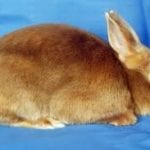Scientific Facts
| Common Name: | Netherland Dwarf Rabbit |
| Scientific Name: | Oryctolagus cuniculus |
| Life Span: | 10 to 12 years |
| Size (Adult): | Dwarf |
| Weight (Adult) | 1.1 to 2.5 pounds |
| Habitat: | Human homes, yards, farms, and gardens |
| Body Shape: | Compact |
| Country of Origin: | Holland |
Physical Description
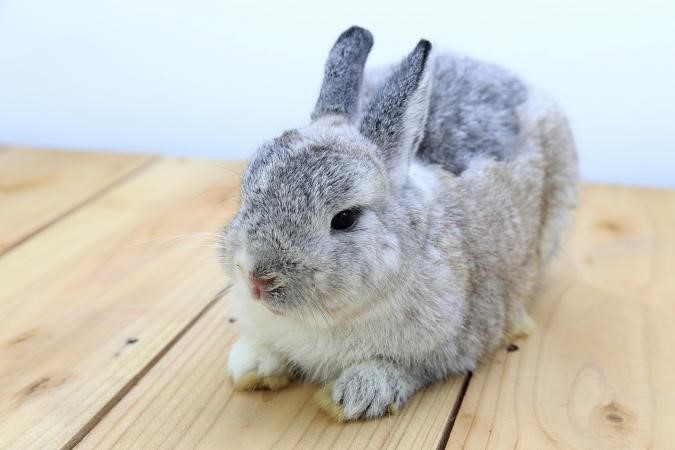
The Netherland dwarf rabbit is a breed of domesticated rabbits that was developed in the Netherlands. These rabbits are small, weighing only 1.1 to 2.5 pounds. This is one of the smallest rabbit breeds and is very popular in pet shows and contests.
The Netherland dwarf breed is recognized by the American Rabbit Breeders Association or ARBA and the British Rabbit Council or BRC. This breed is always mistaken with the Polish rabbit, but the Netherland dwarf has longer ears and is leaner.
The most prominent feature of the Netherland dwarf is its eyes. It is very large with respect to its small and compact body. Its ears are very short and are located high on its head with its face brachycephalic and round. Experts say that these features may be the result of dwarfism because this rabbit can retain its infant-like appearance till its adulthood.
Coat and Colors
The coat of the Netherland dwarf is not too hard to maintain. It is short to medium in length and is soft and won’t need too much fuss when grooming. This rabbit molts, and this means that its fur will shed excessively. Molting happens once a year, usually during the spring.
There are a variety of coat colors for the Netherland dwarf. Accepted colors by the ARBA are the chinchilla, sable point, tortoiseshell, black silver marten, orange, blue tan, chocolate Himalayan and many more. There are no specific markings on the Netherland dwarf rabbit that makes it stand out from other dwarf breeds.
History of the Breed
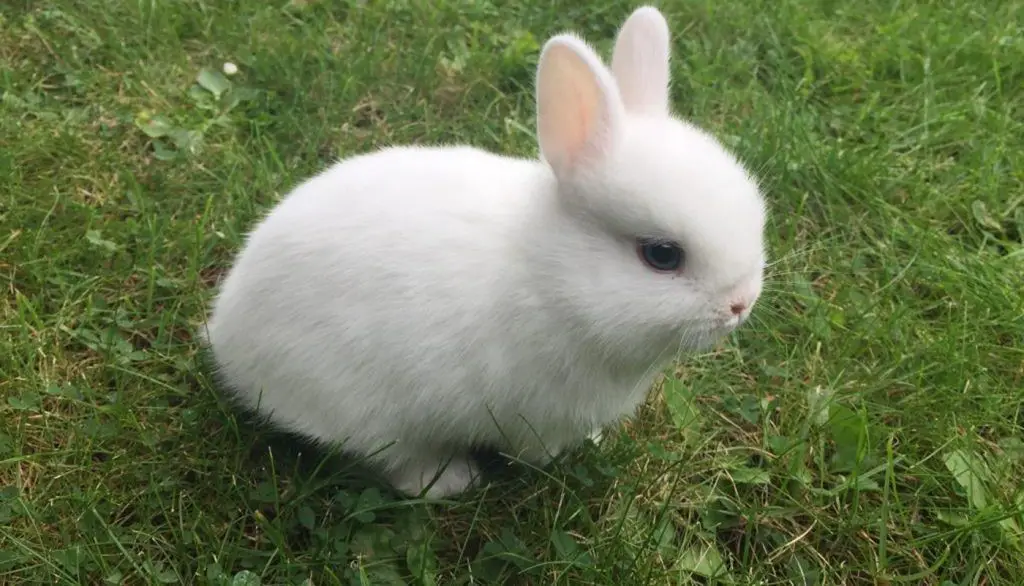
The Netherland dwarf was first developed in the Netherlands during the early 20th century. This was created using small Polish rabbits and smaller but wild rabbits. And after several generations of breeding, the result was a rabbit with a very small body structure that comes in a variety of colors.
The Netherland dwarf rabbit was first imported to England in 1948. The United States saw its first Netherland dwarf rabbits from 1960 to 1970. Soon after, the Netherland dwarf was accepted by the American Rabbit Breeders Association in 1969. The ARBA used a modification of a standard set by the BRC.
The very first Netherland dwarf rabbits that were presented in the 1970s to the 1980s were quite fearful and sometimes aggressive. This was due to breeders selecting wild dwarf rabbits to breed with the Polish rabbit. This aggressive behavior made the rabbits unfit to be petted. And finally, because of selective breeding, the modern Netherland dwarf was created, and this had a gentle, docile, and friendly nature. It still retained the energetic
Fast Facts
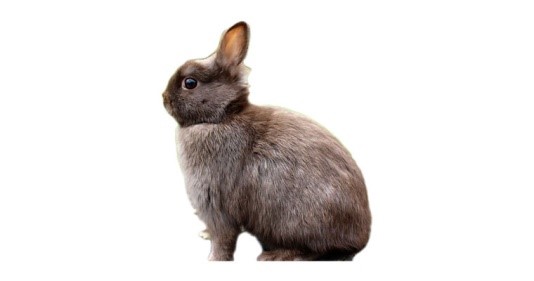
The Netherland dwarf rabbit breed is one of the most varied when it comes to color. But the most interesting thing about this breed is that it retains a baby-like appearance, features, and size even in its adult years. Experts say that this is dwarfism and not due to any kind of disease or genetic trait.
Reproduction
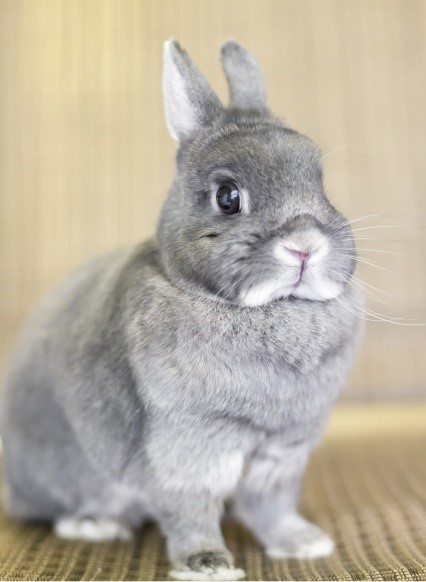
The Netherland dwarf rabbit breeds just like any other rabbit breed. Captive rabbits like the Netherland dwarf breed all year round due to forced breeding. It starts by placing a male and a female together in a cage. The male and the female will chase each other inside the cage until the female gives in and surrenders to the male’s persistence.
The female will show that she is interested in the male by lying down on her side and allowing the male to sniff or smell her. The male will mount her, and the two will mate quickly. The male will let the female go after a short while, signaling that mating is successful.
The breeder transfers the female to another cage after a few days and then creates a nesting area for her. The gestation period of a rabbit is up to 38 days, and before the female delivers her kits, she will lose interest in eating and drinking and may act agitated or restless. This is the time when she starts looking for a good place to deliver her young.
She will use hay, fur, and other available materials to build her nest, and soon, the little rabbits will be born, 3 to 5 babies in one litter. The bunnies are naked, blind, and deaf when born and are very vulnerable to predators like a pet cat or dog.
The mother will remain in the nest for only a short period at night to nurse her babies and then leaves again. She will return nightly to nurse her young and then will wean them on day 10 to 13. The babies will open their eyes at day 5 and will leave the nest at day 10.
Fun Facts

As mentioned, the wild side of the Netherland dwarf rabbit remains as it is known to be skittish. It’s the owner’s job to train his pet so that it will become calmer, friendlier, and sweet. It can take time with some pet owners taking months to do it. Most pet owners who train their skittish Netherland dwarfs have reported success. You can do it too!
Personality and Behavior
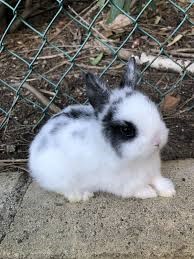
Compared to other mini and dwarf rabbits who enjoy human companionship, the Netherland dwarf may take time to trust their owners. Because of their shy and skittish behavior, this is not for families with very young children. They can easily be dropped or may get hurt if they fall from a tall height.
This rabbit must also be socialized with other rabbits at a young age and should also get a lot of human interaction. When they can conquer their shy and skittish nature, you’ll have a friendly and energetic rabbit pet that will enjoy your companionship.
Comparable Breeds
The Netherland dwarf rabbit is comparable with its parent breed, the Polish rabbit. Polish rabbits are also dwarf size weighing only 2.5 to 3.5 pounds. This has a lifespan of up to 6 years and has a compact body shape. But compared to the Netherland dwarf rabbit, it has a docile, friendly, and calm nature. This is why it’s best suited for singles, first-time pet owners, and also for families and people who live in small spaces like apartments.
Care of Netherland Dwarf Rabbits
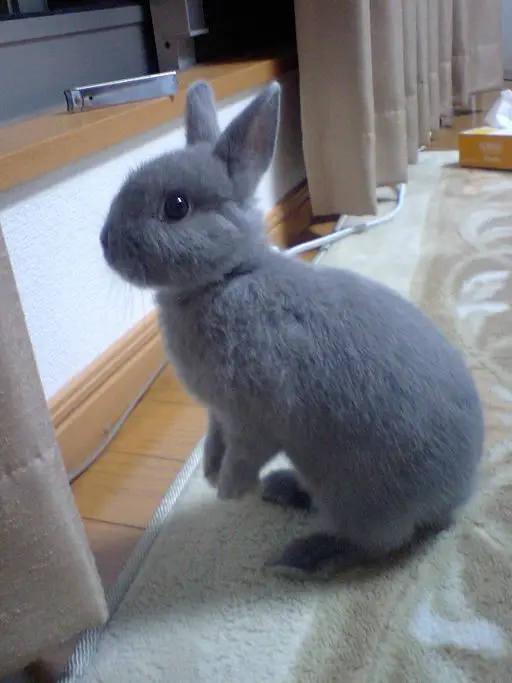
Despite its unique size and lovable looks, taking care of a Netherland Dwarf Rabbit is like caring for other rabbit breeds. Remember that it needs the correct diet, the right housing, companionship, and regular medical checks, and immediate treatment for any illness.
Hay is considered the bulk of a rabbit’s diet because it has many advantages. But you may also feed these rabbit pellets or commercially-prepared food because this contains added vitamins and minerals for your rabbit’s good health. You may also serve small pieces of vegetables and fruits.
Provide unlimited fresh water and hay inside their cages. Hay is an important part of a rabbit’s daily diet and comprises about 70 to 80% of its meals because it’s rough and will keep their digestive tracts regular.
Place the water in a heavy shallow dish so your rabbit can easily drink from it. A heavy dish is the best container, so your rabbit won’t knock this over as it moves around its enclosure. An inverted water bottle with a spout at the end is also a good container for your pet to drink from.
Your rabbit needs the right kind of food, so protect it from pesticides, toxins, and herbicides by feeding it only organic fruits and vegetables. Younger rabbits will need alfalfa hay because this is rich in calcium needed for growing bones. Meanwhile, adult Netherland Dwarf Rabbits will eat legume hay because it is nutritious and ideal for senior rabbits.
Netherland Dwarf Rabbits are lovable pets, but this temperament can only be developed if you train it well. You must Interact with your pet rabbit by playing with it. Rabbits are social animals and thus will need companions aside from their owners. Rabbits that have constant companions and regular interactions with their carers are healthier and happier and may live longer than other rabbits.
Netherland Dwarf Rabbits are similar to all rabbits when it comes to grooming. These rabbits are very meticulous and will groom themselves for hours. Rabbits may groom each other, which is a sign that they are happy with their companions. A mother rabbit can also be seen grooming her kits when she is still in her nest, but this behavior will not last since mother rabbits tend to leave the nest early and return only during nighttime to feed her hungry babies.
Netherland Dwarf Rabbits are very active in the daytime as they eat, forage, socialize, and breed. They tend to sleep in the evenings at around 8 hours per day. With this in mind, feeding your pets must be done in the morning when they are very active.
Supplies and Cages
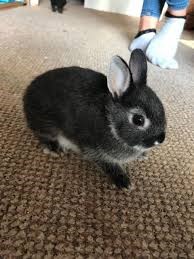
The enclosure for a captive Netherland Dwarf Rabbits should be very durable. It must be made of wire and have a strong frame. The bottom must be removable where the rabbit’s droppings will easily fall. This makes it easier to clean the cage. The enclosure floor must have soft bedding so that it is comfortable to walk or sit on.
A rabbit hay feeder on the side of the enclosure is a good idea. Fill this with hay so your rabbit can eat when it feels hungry. For cage bedding, you must only use hay, wood pellets, or pelleted bedding. To clean the cage, remove your pets and place these in a safe and clean enclosure. Use a safe cleaner or natural cleaning product such as white vinegar, baking soda, or lemon juice. These cleaners will disinfect the cage and remove stubborn smells and stains. Never use household cleaners because these may have toxic ingredients that can be dangerous to your pet’s health.
You must consider a separate or extra cage if you plan to breed Netherland Dwarf Rabbits or take care of baby rabbits. These are born naked, deaf, and blind and thus need a warm enclosure to keep their bodies at the right temperatures. Use a smaller cage with cage lamp or lighting to keep kits dry, warm, and safe from predators.
Similar to other breeds, Netherland Dwarf Rabbits will love chewing on anything that they see. If these rabbits are kept indoors, these will chew on anything made of wood, such as wooden walls, fixtures, and furniture. This can also chew on electrical wiring and to avoid electrocution and other accidents, provide hay or chew toys. Always rabbit-proof your home (indoors and outdoors) before releasing your pet rabbit from its cage.
Health Concerns
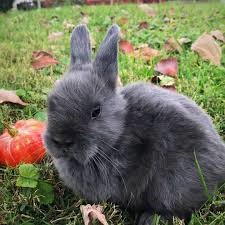
A Netherland Dwarf Rabbit is a healthy breed and is not affected by any kind of disease. The most common conditions that the Netherland Dwarf Rabbit may be affected with are pests like mites, ticks, and fleas because these are found in their indoor or outdoor environment.
Meanwhile, this breed may be affected by common rabbit diseases; therefore, you must always monitor your rabbit’s health and temperament. Any change could be caused by an illness. As early as your pet opens its eyes and is weaned from its mother, take it to the vet for standard vaccinations and tests.
Your vet will examine your pet and give routine tests to assess the overall health and development of your rabbit pet. Also, there are rabbits with sensitive digestive systems and could be prone to different health conditions that affect the digestive tract like enteritis, bloat, and stasis. These could affect rabbits, which are less than two months of age.
You must watch out for ear or fur parasites, and the most common are mites, fleas, and ticks. Rabbits affected by these parasites are usually enclosed in unkempt and dirty cages and have poor hygiene.
You must check your rabbit for any signs of illness like poor appetite, nasal and eye discharges, loose stools, constipation, and vomiting. Also, an unsteady gait, restlessness, grating of the teeth, and sleeping for longer hours could indicate a serious condition. Take your pet to the vet if you see these symptoms.
Another very important thing about taking care of rabbits is deworming. Your Netherland Dwarf Rabbit should be treated for worms at least twice a year and should be done during springtime and fall. This is a major concern with rabbits that come from the wild or are bred from wild parents. They may carry these pests and even other diseases from the wild.
All rabbits should be dewormed with a deworming paste; a pea-sized amount of this paste will do. Put this in the rabbit’s mouth, and this will continuously lick and swallow the deworming medication. You should follow the dose according to your vet’s prescription.
Dental Care
A rabbit’s teeth will continuously grow, and sometimes, their teeth can grow very long that this can pierce the mouth and gums, causing pain, discomfort, and poor appetite. You must make sure that the rabbit’s teeth don’t overgrow.
You can help your rabbit by giving it hay because this files down teeth naturally as the rabbit chews. You may place small chunks of wood, wooden baskets, or other accessories that can file a rabbit’s teeth. Always check your rabbit’s dental health to save on expensive dental bills.
Spaying or Neutering
Rabbits should be spayed and neutered early because of their promiscuous behavior. A responsible pet owner will control this unwanted behavior (unless you are breeding rabbits!) by spaying or neutering their pet or pets. Spaying and neutering are done in a vet’s office, and usually, veterinarians wait until the rabbits are six months to be safe. Bucks are also neutered at a young age because experts say that neutering can reduce aggression. For any question about spaying and neutering, and for tips on how to care for rabbits after these procedures, consult your vet.
Grooming
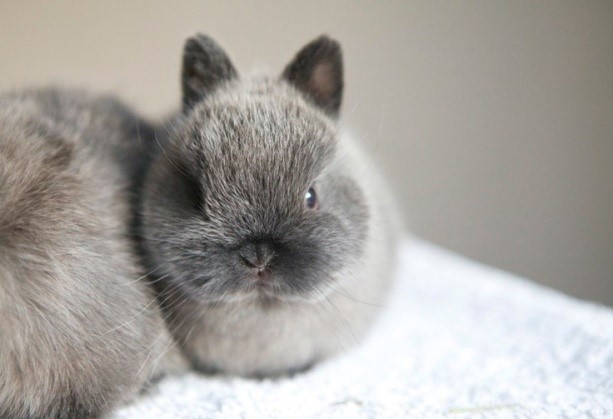
Netherland Dwarf Rabbits have short to moderately short furs depending But no matter what, you have to groom this regularly. Brushing the fur can help make it clean, shiny, and free from pests. Groom this using a small brush at least twice a week.
Grooming is done more frequently when your rabbit is molting to prevent wool blocks and to keep the rabbit from ingesting fur. This can accumulate in the digestive tract, which can lead to blockage and more complications.
If your rabbit comes home dirty or muddy, don’t bath it. This can cause a lot of stress. The best way to deal with this is to spot clean using a damp towel. Just wipe the rabbit down with the towel and use a dry one when you’re done.
Trim your rabbit’s nails regularly and check its ears for pests and wool blocks. You may take it to a groomer for proper cleaning, too, and this won’t cost a lot.
Availability – Where to Get One?
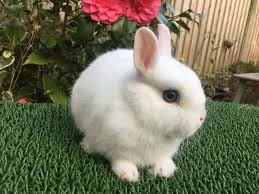
The cost of buying a Netherland Dwarf Rabbit could vary whether you are getting a rabbit from a breeder or a retailer like a pet store or online pet shop. The price will also vary whether you are purchasing a rabbit for a pet or show. You can expect the price to vary according to gender, size, color, coat quality, and overall appearance.
This breed may be seen in trade fairs and similar events. Meanwhile, there are shows and contests sponsored by the ARBA that feature this breed, and it is also featured by its dedicated clubs and associations.
How to Care for a Netherland Dwarf Rabbit
This is a summary of how to care for a Netherland Dwarf Rabbit breed. A Netherland Dwarf Rabbit requires similar care as other rabbit breeds. There are four basic components of its care: the right diet, housing, companionship, and medical care.
The main food of captive-bred rabbits is hay, and this makes up 70 to 80% of its diet. Hay is important in their diet so they can chew this to grind their teeth, to keep their digestive system healthy and maintain regular bowel movements. Aside from hay, you may also use pellets for rabbits, vegetables, and fruits.
Always keep fresh water and hay inside the rabbit’s cage. Place water in a large, heavy shallow dish so your pets won’t knock it over as these moves inside their cage.
Also, captive-bred rabbits can only become calm, friendly, and docile when you take time to train them. It would help if you train and interact with your pet regularly. Captive rabbits are also social animals and will need a rabbit companion or several companions in a cage.
And, take your pet to the vet because it needs vaccinations, tests, and a clean bill of health before you allow it to socialize with other rabbit companions and before you allow a child to handle it, assuming that you have a pet rabbit. Understand the different signs of illness, and for any symptom, take it to the vet for immediate care.
FAQs
Are Netherland Dwarf Rabbits carnivorous animals?
No, Netherland dwarf rabbits are not carnivorous and are herbivores, which means that these won’t eat any meat only plants. It will only consume plants or plant parts like roots, bark, leaves, flowers, twigs, stems, seeds, and so many more.
What do Netherland Dwarf Rabbits eat in the wild?
Netherland Dwarf Rabbits are herbivorous, and it will only eat plants. These will eat all plant parts like the plant roots, bark, seeds, weeds, flowers, and leaves. In captivity, it can eat commercially-prepared rabbit pellets, vegetables, and fruits.
Can Netherland Rabbits swim?
Yes, Netherland Dwarf Rabbits can swim, which is like other rabbit breeds, but it may not be as good as other water animals. However, rabbits do not want to get wet and won’t even like a bath because this can stress them a lot.
Can you leave a Netherland Dwarf Rabbit indoors to play in your home?
You may allow a rabbit to remain indoors but only under your supervision. Use a portable perimeter fence to prevent the rabbit from accessing specific areas like your kitchen or bathroom. Keep in mind that you have to rabbit-proof your home before you let your pet or pets lose.
How do you tame a wild rabbit?
A wild rabbit cannot be tamed; this is not recommended because you might end up getting bit and hurt. You can train a captive-bred rabbit because these rabbits have a docile behavior and are calmer compared to wild rabbits. However, these still require constant handling and interaction to remain tame, happy, and healthy in captivity.
Do Netherland Dwarf Rabbits eat fruits and vegetables?
Yes, Netherland Dwarf Rabbits will eat fruits and vegetables because these are domesticated rabbits. Aside from these, you may also offer commercially-prepared pellets or rabbit food that have added nutrients that your pet needs for good health.
Where do Netherland Dwarf Rabbits live?
Netherland Dwarf Rabbit is not found in the wild because these are domesticated rabbits. These are housed in human areas and commercial establishments like breeding kennels, pet stores, and inside human homes as a pet. Netherland Dwarf Rabbit pets may be housed in a large cage indoors or outdoors in groups for companionship.
Can you keep a Netherland Dwarf Rabbit as a pet?
Yes, you can keep the Netherland Dwarf Rabbit as a pet due to its docile and sweet temperament. It is a good pet for families but not for families with very small children because of the small size of this rabbit breed.
Will Netherland Dwarf Rabbits eat their poop?
Yes, similar to all rabbit breeds, Netherland Dwarf Rabbits will eat their poop because these still have nutrients in them. After eating their poop once, they won’t do it the second time. No one knows why rabbits do this, but you can prevent this by removing their droppings as soon as they defecate.
Can you keep two or more Netherland Dwarf Rabbits in one cage?
Yes, you can keep two or more rabbits in one enclosure as long as their cage is large enough. To take care of several rabbits, the cage must be large, comfortable, and safe so your rabbit or rabbits can live comfortably and to avoid aggressive behaviors.
Where do you place a Netherland Dwarf Rabbit’s cage, indoors, or outdoors?
The place to put a rabbit’s cage may depend on you. You may place the cage indoors to protect it from the elements, but indoor cages tend to be small and may not fit several Netherland Dwarf Rabbits. When you use an outdoor cage, the rabbits may need to deal with the cold, but at least they will have a large area to live, play, and socialize.
Should you take a wild rabbit from the forest?
Don’t get a wild animal such as a rabbit from the wild. You won’t be able to tame it and make it your pet because it will remain wild. A wild animal may even bite you and have rabies. Therefore, if you see an injured rabbit, you may call animal services for help.
Are Netherland Dwarf Rabbits endangered?
No, Netherland Dwarf Rabbits are not endangered. This is a domesticated rabbit; therefore, Netherland Dwarf Rabbits are available from local and international breeders and in pet shops and human homes as pets.
How large should a Netherland Dwarf Rabbit’s cage be?
One Netherland Dwarf Rabbit should be placed in a large enclosure so it can roam, play, and socialize in a large area. For two rabbits, double the size of the enclosure. You must never overlook the size and make sure that your rabbits have enough space to play, eat, and sleep together.
Are Netherland Dwarf Rabbits territorial?
Some breeders say that Netherland Dwarf Rabbits may become territorial when these are placed in a small cage or enclosure. The males can develop aggressive behavior and may become very dangerous to other males during the breeding season. Aggressive males can bite, scratch, and kick their rivals to establish hierarchy.
Do you need a heater inside a Netherland Dwarf Rabbit’s cage?
You may use a cage lamp to provide heat. But in cold climates, you must use a small heater and place this near the rabbit cage to create a comfortable place for your pet. This is important if you want to incubate baby rabbits.
Will a mother Netherland Dwarf Rabbit eat her young?
Some rabbit species will eat their young. Experts are still wondering why this is happening, but if you see the mother Netherland Dwarf Rabbit eating her young, remove it from the nest and don’t let it breed again.
Can rabbits survive the cold?
Yes, rabbits such as the Netherland Dwarf may stay in the cold and survive it because of their fur. Rabbits will use their short legs to dig the snow and eat roots, shrubs, berries, and other small pieces of food that are available.
How do you clean a Netherland Dwarf Rabbit’s cage?
First, you must remove the rabbit inside the cage and place it in another cage, container, or enclosure. Take the pan where the poop is found and dispose of the droppings. Hose the cage down and use a brush and cleaning product and clean the cage walls, floor, accessories, and toys. Everything should be dry before placing the rabbit back.
How do you take care of baby Netherland Dwarf Rabbits?
If you want to breed Netherland Dwarf Rabbits, put the kits in a comfortable and warm cage. Give them soft, pureed food, and keep these safe and warm. You must protect these from predators and even from your house cat or pet dog.
Can Netherland Dwarf Rabbits remain outdoors?
A pet Netherland Dwarf Rabbit may be allowed to remain outdoors, but you must rabbit-proof your yard first. A portable fence is a good way to prevent your pet from roaming free. Be sure to bury the poles of the fence to prevent the rabbit from digging it out and escaping.
Can rabbits see in the dark?
Yes, rabbits can see very well in the dark because these have good vision even at night. This is why some rabbits prefer to forage for food at night or during twilight and dawn. Rabbits like the Netherland Dwarf Rabbit also have a good sense of smell and hearing so they can easily spot predators.
What happens when the teeth of a rabbit grow longer?
When the teeth of the rabbit grow longer, these can pierce its mouth and gums and can result in a lot of pain, and pain can affect its appetite. Your pet rabbit must see a dentist regularly, and you can help too by feeding it hay since this can grind their teeth shorter while it chews.
How often do rabbits need to visit the vet?
Rabbits should get a vet check-up at least once a year. Young rabbits must be vaccinated against diseases as early as possible, and an initial visit should be made to a vet when they are just a few weeks old.
Can you prevent a Netherland Dwarf Rabbit from eating his droppings?
You can stop a rabbit from eating poop by removing the droppings right away after these defecate. But of course, you have better things to do than watch your rabbits poop! And no matter what, these animals will still eat their droppings because they know that it still has available nutrients in them.
Does it hurt when a Netherland Dwarf Rabbit hits you with its legs?
Yes, because Netherland Dwarf Rabbits have very sharp claws on its hind feet. This can kick hard with its hind feet, which can cause damage. Don’t worry because a rabbit will only do this when it feels threatened or afraid.
Can rabbit diseases affect humans?
Some rabbit diseases can affect only their fellow rabbits, but some are also dangerous to humans. If your rabbit is sick, take it to the vet as soon as you can. You must check for the different signs of illnesses such as poor appetite, diarrhea, constipation, sneezing, problems with breathing, and any changes in behavior. Take your pet to the vet ASAP.
Do Netherland Dwarf Rabbits have good hearing?
Despite having small ears, the Netherland Dwarf Rabbit has good hearing. This can hear its predators from far away, and thus this rabbit can still escape the threat.
Are all female rabbits cannibals?
Some female rabbits eat their young, and experts say that this happens because the female is hungry or thirsty after giving birth, and there’s no food or water in its cage. Also, it may be a way to remove any traces of tissue, blood, and odor in the nest when a baby rabbit is stillborn.
Are Netherland Dwarf Rabbits bites dangerous?
Yes, Netherland Dwarf Rabbit bites can be dangerous, and this may also be true for all rabbits because rabbits may have rabies. Rabbit teeth are huge, and this can tear off the flesh and can lead to an infected, deep wound.
Can Netherland Dwarf Rabbits escape their cages?
Yes, Netherland Dwarf Rabbits can escape their cages by knocking their cages down. These won’t be able to jump over and escape but will use force to escape their enclosure.
How young should a rabbit be before you spay or neuter it?
It depends on the vet as to when to spay or neuter a rabbit. Some bucks are spayed when they are 3 months, while some vets will wait till the males are 5 to 6 months.
Can you train your rabbit to use a collar and leash?
Some pet owners were successful in training their pet rabbits to wear a collar and a leash, but some say that this is impossible with other breeds and thus are skeptical about doing it.
Where do rabbits sleep in the wild?
In the wild, rabbits may sleep in holes or burrows. They dig burrows as deep as a meter to remain there all day to escape the hot sun. Rabbits can also sleep in these dens and nests. Captive rabbits live in an enclosure that can accommodate a group of rabbits and is secure from predators.
Will a pet rabbit survive the cold?
Some rabbits can survive the cold and will find food under the snow. Some rabbits will transform and change their fur color to adapt to the freezing winter weather; however, some may not survive at all like dessert rabbits.
Can you put the cage of Netherland Dwarf Rabbits near other rabbit breeds?
Yes, you can do this, and this is done in pet shops and stores. Netherland Dwarf Rabbits are friendly, docile, and calm; therefore, meeting other rabbits is not a worry to them.
What to do with abandoned baby rabbits?
For wild kits, contact animal service. You should never get remove baby rabbits from the wild to become a pet.
Will Netherland Dwarf Rabbits recognize their owners?
Yes, some rabbit owners say that their pets can recognize them and will only eat when they are serving their food. Rabbits may also tell if they are being handled by their owners or by a stranger and thus may become difficult to handle.
Can pet rabbits tolerate children?
Some rabbits don’t want to be held, especially by young children. Meanwhile, some rabbits are calm, docile, and friendly and won’t mind being held and petted even by young kids.
How many rabbits are you able to keep as pets?
You can keep three or more rabbits as long as you have a large cage or enclosure to keep these comfortable and happy. It all depends on your patience, resources, and space. Keeping only one rabbit will make it lonely and will only make it depressed.
Will rabbits eat insects or insect larvae?
No, rabbits won’t eat insects or larvae of insects because these are herbivores. This animal will eat only plant and plant parts, rabbit pellets, fruits, and vegetables.

